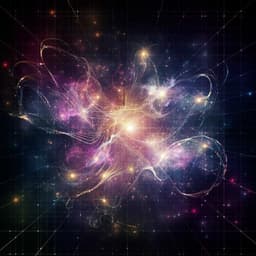Introduction
Determining the ground state of interacting quantum many-body systems is a fundamental problem in condensed-matter and quantum physics. The exponential complexity of these systems presents a significant hurdle for traditional numerical methods. Exact diagonalization suffers from the curse of dimensionality, quantum Monte Carlo encounters the sign problem, and tensor network methods face challenges with entanglement and matrix contraction complexity. Frustrated magnets, particularly those exhibiting putative quantum spin liquid (QSL) phases, exemplify this complexity. While various numerical techniques have been employed, the nature of many presumed QSLs, such as in the J₁-J₂ Heisenberg models on square and triangular lattices, remains debated. Neural quantum states (NQSs), using artificial neural networks to encode many-body wavefunctions, offer a promising alternative. However, their application has been limited by the computational cost of existing optimization algorithms, particularly stochastic reconfiguration (SR), which scales quadratically with the number of network parameters, restricting the use to shallow networks with limited expressiveness. This work addresses this limitation.
Literature Review
Existing numerical methods for solving the quantum many-body problem each have their limitations. Exact diagonalization is hindered by the exponential growth of the Hilbert space dimension with system size. Quantum Monte Carlo methods suffer from the notorious sign problem, which makes accurate calculations difficult for fermionic systems and frustrated spin models. Tensor network methods, while powerful, can also become computationally expensive for large systems due to the growth of entanglement and the complexity of matrix contractions. The J₁-J₂ Heisenberg model on square and triangular lattices serves as a benchmark system for studying QSL phases, yet the nature of these phases (gapped or gapless) remains a subject of ongoing debate, with various studies providing conflicting results. NQSs have shown promise in tackling these challenges, with successful applications demonstrated in the literature. However, the scalability of NQSs has been limited by the computational cost of optimizing deep network architectures. Existing optimization approaches, such as SR, which is widely used due to the rugged quantum energy landscape, have been unable to efficiently handle the large parameter spaces associated with deep neural networks, confining most prior studies to shallow architectures.
Methodology
This paper introduces a novel optimization algorithm, termed minimum-step stochastic reconfiguration (MinSR), for training deep NQSs. MinSR significantly reduces the computational cost of SR while maintaining accuracy. Standard SR involves minimizing the quantum distance between the new variational state and the exact imaginary-time evolved state, requiring inversion of a quantum metric matrix, an O(N³ₛ) operation. MinSR exploits the fact that in deep networks (Nₚ ≫ Nₛ, where Nₚ is the number of parameters and Nₛ the number of samples), the rank of the quantum metric matrix is at most Nₛ. It introduces a neural tangent kernel, reducing the complexity to O(NₚNₛ + Nₛ), making it linear in Nₚ for large networks. The authors apply MinSR to the spin-1/2 Heisenberg J₁-J₂ model on square and triangular lattices, using two different residual neural network (ResNet) architectures. The first ResNet (ResNet1) uses two convolutional layers in each residual block, followed by a final activation function. The second ResNet (ResNet2) omits normalization layers but offers flexibility in the final activation function for both real and complex-valued wavefunctions. The authors incorporate techniques to handle sign structures (Marshall sign rule and 120° magnetic order) and exploit symmetries (C₄ for the square lattice, D₃ for the triangular lattice, and spin inversion symmetry) to improve accuracy. Zero-variance extrapolation and a Lanczos step are used to further refine the energy estimates.
Key Findings
MinSR dramatically accelerates the training of deep NQSs, allowing for the exploration of significantly larger network architectures compared to previous studies. The authors demonstrate the effectiveness of MinSR by training deep ResNets with up to 10⁶ parameters, achieving unprecedented accuracy in variational energy calculations for the J₁-J₂ Heisenberg model on square and triangular lattices. For a non-frustrated 10x10 square lattice Heisenberg model, the results surpass the accuracy of existing variational methods, approaching machine precision. In the frustrated J₁-J₂ model (J₂/J₁ = 0.5) on a 10x10 square lattice, the variational energy obtained using MinSR is significantly lower than those from previous methods, including tensor network calculations. This improvement is even more pronounced for larger lattices (16x16). The high accuracy achieved enables a precise extrapolation to the thermodynamic limit, allowing investigation of the energy gap in QSL phases. For the square lattice at J₂/J₁ = 0.5, the authors find strong evidence for a gapless QSL phase, contrasting with some previous results reporting a gapped phase. Similar analysis for the triangular lattice J₁-J₂ model (at J₂/J₁=0.125) also points towards a gapless QSL. The success of MinSR on these large and complex models highlights its potential to overcome some of the key challenges associated with the many-body problem.
Discussion
This research presents a significant advancement in the field of quantum many-body simulations using neural networks. The development of MinSR offers a powerful new tool for tackling complex quantum systems beyond the reach of traditional methods. The highly accurate results obtained for the J₁-J₂ model on both square and triangular lattices not only demonstrate the capabilities of MinSR but also provide valuable insights into the nature of QSL phases in these systems, offering compelling evidence for gapless phases. The improved accuracy over existing techniques allows for more reliable extrapolation to the thermodynamic limit, a crucial aspect in understanding the properties of quantum many-body systems. The significant speedup achieved by MinSR opens doors for exploring even larger and more complex systems. The general applicability of MinSR extends beyond NQS to other variational wavefunctions, providing opportunities for improvements in traditional methods.
Conclusion
This work introduces MinSR, a highly efficient optimization algorithm for training deep neural quantum states. MinSR significantly reduces the computational cost of traditional methods while maintaining accuracy, enabling the study of large-scale quantum systems. The application of MinSR to the J₁-J₂ Heisenberg model demonstrates unprecedented accuracy in the calculation of ground-state energies and provides strong numerical evidence for gapless QSL phases in both square and triangular lattices. Future research directions include applying MinSR to fermionic systems (Hubbard model), ab initio quantum chemistry, and other variational wavefunctions like tensor networks. The potential of MinSR extends beyond physics, with possible applications in general machine learning tasks.
Limitations
While the results are highly promising, some limitations exist. The accuracy of the zero-variance extrapolation relies on the assumption that the error state does not change significantly with the system size. Additionally, the chosen neural network architectures (ResNets) are specifically designed for this problem, and the performance might vary with different architectures. The applicability of the method to different types of quantum systems requires further investigation.
Related Publications
Explore these studies to deepen your understanding of the subject.







